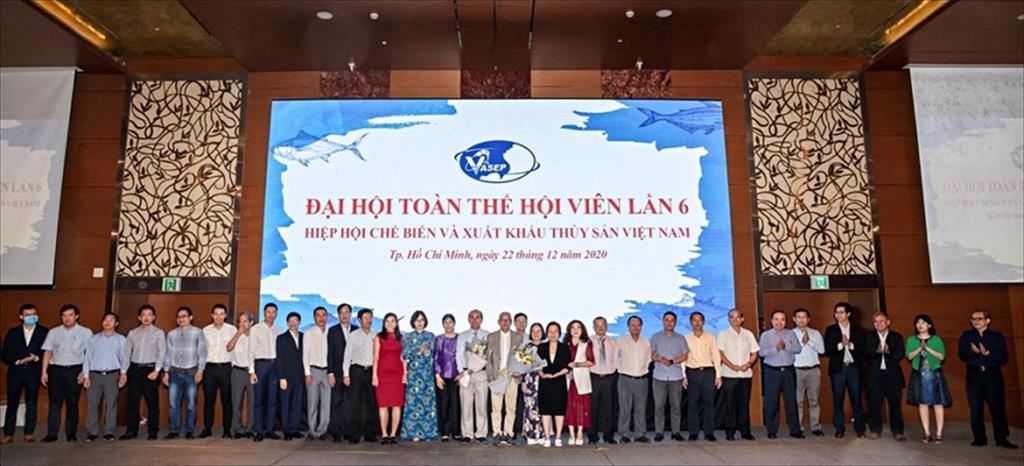The Viet Nam Association of Seafood Exporters and Producers said it plans several measures to help its members further penetrate the global supply chain and enable the fisheries sector to reach its export target of US$12 billion in 2025, 40 per cent higher than this year.

The sixth general congress of VASEP's members on 22nd December, 2020
It held its sixth congress in HCM City on Wednesday to review its 2015-20 activities and make plans for 2020-25, and speaking at the event, Trương Đình Hòe, its general secretary, said despite difficulties due to unfavourable weather, trade barriers such as anti-dumping taxes on shrimp and tra fish in the US and the EU’s ‘yellow card’ for illegal, unreported and unregulated fishing, and others, Việt Nam’s seafood exports increased by 2.5 per cent on average in the last five years and it now ranks in the top three in the world with China and Norway.
The COVID-19 pandemic reduced exports significantly in the first half of this year, but they have recovered since July. The export this year is estimated to reach $8.58 billion, equal the figure of last year.
Trade deals such as the EU-Việt Nam FTA, CPTPP and others with major markets such as Korea, Japan, and ASEAN have helped Vietnamese seafood products become competitive in those markets, he said.
During the last five years the association worked with the Government to advocate sound policies, created business opportunities for its members through exhibitions and trade promotions and diversified the operation of its product committees, he said.
Talking about the new term, he said, “The association will work to achieve the export target of $12 billion by 2025, increase to 300 members from the current 160 and increase connectivity among them.”
The shrimp committee would work to reduce production cost, improve product competitiveness, enable traceability, and enhance processing to add value to the products.
Việt Nam’s shrimp exports are expected to exceed one million tonnes by 2025, helping it surpass India to become the world’s largest exporter, he said.
The association also plans to work to promote consumption of shrimp and other seafood in the domestic market, he said.
The marine product committee would seek to increase export to markets with which Việt Nam has FTAs, and the association is striving to get rid of the EC’s yellow card as soon as possible and diversify raw material sources, he said.
With this five-year strategic vision, the association wants to make the seafood sector to improve profitability and value addition for the industry, and promote the Vietnamese seafood brand globally, he added.
Deputy Minister of Agriculture and Rural Development Lê Quốc Doanh hailed the association’s contribution to the country’s economic development over the last year.
“The agri-forestry-fishery sector is one the country’s key economic sectors with its exports estimated to reach $41.2 billion this year. Of this, seafood accounted for $8.5 billion.
“The 14 FTAs the country has signed will open the door wide for the sector to boost exports.”
But the sector also faces shortcomings and challenges like small scale of production, erratic raw material supply and trade barriers, he warned.
He urged the sector to focus on resolving these issues, getting the EC to lift its yellow card soon and increasing the processing rate to add value to its products.
Vietnamese seafood is exported to over 160 markets around the world, with the US, Japan, EU, China, Korea, and ASEAN being the largest.
VASEP received the Emulation Flag from the Ministries of Agriculture and Rural Development and Industry and Trade for its achievements over past years.
The congress elected a 31-member executive board and re-elected Ngô Văn Ích as the association chairman for the 2020-25 term. — VNS
Source: VNS